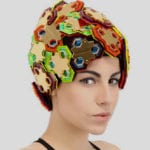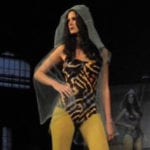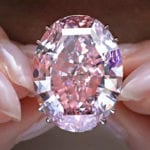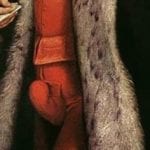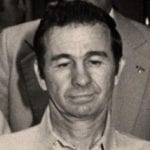 Technology
Technology  Technology
Technology  Humans
Humans 10 Everyday Human Behaviors That Are Actually Survival Instincts
 Animals
Animals 10 Animals That Humiliated and Harmed Historical Leaders
 History
History 10 Most Influential Protests in Modern History
 Creepy
Creepy 10 More Representations of Death from Myth, Legend, and Folktale
 Technology
Technology 10 Scientific Breakthroughs of 2025 That’ll Change Everything
 Our World
Our World 10 Ways Icelandic Culture Makes Other Countries Look Boring
 Misconceptions
Misconceptions 10 Common Misconceptions About the Victorian Era
 Mysteries
Mysteries 10 Strange Unexplained Mysteries of 2025
 Miscellaneous
Miscellaneous 10 of History’s Most Bell-Ringing Finishing Moves
 Technology
Technology Top 10 Everyday Tech Buzzwords That Hide a Darker Past
 Humans
Humans 10 Everyday Human Behaviors That Are Actually Survival Instincts
 Animals
Animals 10 Animals That Humiliated and Harmed Historical Leaders
Who's Behind Listverse?

Jamie Frater
Head Editor
Jamie founded Listverse due to an insatiable desire to share fascinating, obscure, and bizarre facts. He has been a guest speaker on numerous national radio and television stations and is a five time published author.
More About Us History
History 10 Most Influential Protests in Modern History
 Creepy
Creepy 10 More Representations of Death from Myth, Legend, and Folktale
 Technology
Technology 10 Scientific Breakthroughs of 2025 That’ll Change Everything
 Our World
Our World 10 Ways Icelandic Culture Makes Other Countries Look Boring
 Misconceptions
Misconceptions 10 Common Misconceptions About the Victorian Era
 Mysteries
Mysteries 10 Strange Unexplained Mysteries of 2025
 Miscellaneous
Miscellaneous 10 of History’s Most Bell-Ringing Finishing Moves
10 Disturbing Tales From The World Of Designer Fashion
Famous fashion designers inhabit an exclusive world where beauty and money rule. But behind the red carpets and couture gowns there lurks a seething mass of hatred, rage and despair. The air is toxic enough to turn your designer fragrance sour. Welcome to the dark underbelly of the fashion world.
Related: 10 Fascinating Examples Of Disease Influencing Fashion
10 Yves Saint-Laurent
Yves Saint-Laurent was born in Algeria in 1936. He was a timid, sensitive child who was bullied at school but escaped to Paris aged 17 after winning a prestigious design competition. Saint-Laurent was soon hired by couturier Christian Dior and his fresh designs transformed the brand’s traditional image. When Dior died suddenly in 1957, Saint-Laurent became head designer.
Saint-Laurent’s edgy futuristic themes did not impress Dior’s longstanding clients and when he was called up by the French Army in 1960, his employers were happy to let him go.
Saint-Laurent lasted 19 days as a soldier before the harsh conditions and brutal treatment from the other recruits drove him to have a mental breakdown. He was admitted to a military hospital where he was subjected to controversial electric shock therapy and given powerful psychotropic drugs. During his stay he was fired by Dior and replaced by a rival designer.
Saint-Laurent recovered and created his own fashion house but struggled with mental illness and endured a lifelong dependency on hallucinogenic drugs, cocaine and alcohol. He blamed his addictions on the harrowing time he had spent in the army.
9 Dolce & Gabbana
Dolce & Gabbana are a world-famous Sicilian design duo. In 2018 they faced a global boycott after releasing an advert which featured a Chinese model struggling to eat spaghetti with chopsticks. The image was from their “D&G Loves China” campaign and the backlash was explosive.
Stores in China cleared their products from shelves, models refused to appear at a planned fashion show and protestors burned D&G clothes in anger.
Strangely, this wasn’t their first boycott. In 2015, Dolce told an interviewer that babies born through IVF were “synthetic”. His comments earned them a personal boycott from Elton John who called them “archaic”, and an LGBT rights group staged a protest outside their London store.
Dolce & Gabbana blamed it all on their strict religious upbringings which doesn’t explain their next outburst in June 2018. Gabbana drew fierce criticism when he commented on a blogger’s Instagram photos of Selena Gomez with the words “è propio brutta” which roughly translated means “and just ugly”.
8 Halston
Roy Halston Frowick was born in Iowa in 1932. He began his career as a milliner and his most famous creation was the pillbox hat worn by Jackie Kennedy in 1961 at her husband’s inauguration. By 1970 he was designing womenswear and owned a boutique on Madison Avenue. Halston’s brand became a by-word for disco inspired looks when celebrities were photographed wearing his creations at legendary New York nightclub Studio 54. In 1973 he sold his business to Norton Simon Inc but retained control as an Executive and continued to design for the label.
Over the years, Halston’s party lifestyle and drug use hit the headlines. His wild spending habits – he would regularly blow thousands of dollars on flowers – spiralled out of control.
In 1984 Norton Simon fired him due to negative publicity surrounding his personal life and he instantly lost all rights to design under his own name. Despite several court battles, Halston never regained control of the company and he died in 1996.
7 Ossie Clark
Ossie Clark made his name as a designer in the fledgling fashion scene of 1960s London and his clothing was worn by stars including Mick Jagger and the Beatles. As the Swinging Sixties ended, his floral, bohemian styles fell out of fashion and by 1980, Clark was bankrupt and homeless.
In 2010, Clark was found brutally stabbed to death in his rented London flat. Clark’s former lover, Diego Cogolato was found guilty of his murder after suffering a transient psychotic episode in which he believed that Clark was the devil. Cogolato was jailed for six years.
Clark’s ethereal 1960s designs are still in demand on vintage clothing sites and David Hockney’s famous portrait of him is on display at Tate London.
6 John Galliano
Two friends stopped for a drink at a Paris bar. They barely noticed the man sitting alone at the next table until he launched a 45-minute hate-filled rant, using vile anti-Jewish language and making threats to kill.
The man was John Galliano – a celebrated designer and creative director of Dior. Police escorted Galliano home from the bar and when the victims filed a complaint, he accused the pair of defamation. Soon afterwards, a video surfaced of Galliano at the same bar a few months earlier during another drunken rage. He was filmed making violent threats and slurring:
“I love Hitler.”
Galliano was suspended by Dior following the initial offence in February 2011. The case went to court and Galliano testified that he couldn’t remember the incidents due to his alcohol and Valium addiction. He was found guilty of public insults, but his fine was suspended after he made an apology.
5 Alexander McQueen
Lee Alexander McQueen trained as a tailor on London’s elite Savile Row aged just 16. He later moved into theatrical design and then attended university where he named the collection presented at his graduation as: “Jack the Ripper Stalks His Victims”. The clothes featuring fake blood and human hair were snapped up by influential stylist Isabella Blow.
Blow became a friend and financial supporter, providing vital connections to McQueen as he progressed through the fashion world. McQueen loved to shock – famously using an amputee model in a runway show. In 1996, McQueen became chief designer at Givenchy but felt restricted by the traditions in place at the Paris fashion house and returned to London to work under his own name.
In 2007, Isabella Blow took her own life by drinking weedkiller, she had suffered from depression and her previously close relationship with McQueen had drifted over time.
In February 2010, McQueen was found hanged at his London home just days after the death of his beloved mother.
4 Paolo Gucci
Guccio Gucci arrived in London from Florence around 1898 to work as a porter at the Savoy Hotel. After admiring the elegant designs of the guests’ luggage, he decided to launch his own leather goods company. The first Gucci store opened in Florence in 1921. By 1953, Guccio’s son Aldo had moved to New York to market the brand globally.
Aldo was credited with designing the double G logo found on all Gucci products and drove the brand towards its iconic status. In 1977, Aldo appointed his son Paolo as Vice President of the company. When Paolo attempted to launch his own brand of luxury goods under the Gucci name, the family blocked the move and Aldo fired him. Paolo hit back by informing authorities of his father’s $7 million tax evasion and Aldo was subsequently jailed, aged 81.
In 1990, Paolo left his wife Jenny for a horse groomer at their English country estate. Jenny claimed that Paolo had left her, and their daughter stranded and penniless which sparked an epic divorce and custody battle between the two.
Paolo’s efforts to avoid paying child support led to a bizarre incident in 1994. Six prized Arab horses were found starved to death at his farm in an apparent attempt by Paolo to prove he had no money. His plan backfired spectacularly, as he was jailed for failure to pay child support.
Paolo died in 1995, a year after his cousin Maurizio was murdered.
3 Maurizio Gucci
Rodolfo Gucci, son of Guccio, wanted the best for his only heir – Maurizio. He strongly opposed Maurizio’s marriage to Patrizia Reggiani, even leaning on the Bishop of Milan to stop the wedding. The couple went on to marry in 1973 and raised two daughters but the union ended with a bitter divorce in 1984. At the same time, Maurizio was locked in a power struggle with his cousin Paolo which ended when his father Rodolfo died, leaving his majority share of the company to Maurizio.
As CEO, Maurizio sold Gucci holdings to an investment bank for around $120 million. Patrizia was furious that he had sold off their daughters’ birth right and bombarded Maurizio and his new fiancée with death threats.
On March 27, 1995, Maurizio was shot and killed on the steps of his Milan office. Police believed it was a professional hit but had no leads until a man began boasting about his involvement. An elaborate phone tapping system was set up and Patrizia, the hitman, the getaway driver and another associate were caught on tape discussing their part in the murder. One later confessed that Patrizia had insisted that Maurizio should be killed before his impending second marriage.
Patrizia was nicknamed “Vedova Nera” meaning “Black Widow” and served 16 years in jail for ordering her husband’s murder.
After her release, a TV crew asked her why she had hired a hitman to kill Maurizio. She replied:
“My eyesight is not so good. I didn’t want to miss.”
2 Hugo Boss
Hugo Boss is a German fashion brand whose slick advertising campaigns mask their shameful past.
In 1924, Hugo Boss opened a factory in Metzingen, making work clothes and raincoats. Soon, he was approached to produce shirts for the National Socialist party which became the Nazi party. By 1931, Boss was a fully-fledged member of the Nazis and sole manufacturer of uniforms for the Waffen SS, Hitler Youth and the German army.
As World War II raged on and his workforce shrunk, Boss was supplied with workers who had been forcibly removed from occupied Poland and France in order to keep his factory open. The mainly female workforce was housed in a camp with poor hygiene and no shelter from nightly bombing raids.
After the war, Boss – as an active Nazi – was barred from running a business. He successfully appealed and the Hugo Boss company flourished and grew into the luxury brand it is today.
1 Gianni Versace
Gianni Versace was the most celebrated fashion designer in the world when he left his mansion in South Beach, Miami on the morning of July 15, 1997. He took his usual stroll to a local café and upon arrival back at his home he was shot dead by two bullets to the back of his head.
The killer was Andrew Cunanan who was already the subject of an FBI manhunt when Versace became his fifth victim.
Cunanan was a privately educated student from a privileged West Coast family when he dropped out of college to work as a male escort. Cunanan – who friends later described as a compulsive liar—flew to Minnesota in April 1997 and murdered his friend, Jeffrey Trail. A few days later he shot dead his ex-lover, David Madson. Cunanan moved onto Chicago where he killed a stranger – Lee Miglin and stole his car to drive to New Jersey. His next victim was cemetery worker William Reese who he shot before stealing his red pick-up truck.
Cunanan fled to Miami where he spent two months at a hotel near Versace’s mansion. After the murder, Cunanan abandoned the red truck and police found newspaper cuttings about the earlier killings stashed inside the vehicle.
By now, over 1,000 FBI agents were searching for Cunanan. They tracked him down to a houseboat near Versace’s home but as they approached, Cunanan shot himself in the head.
No one knows what sparked Cunanan’s cross country killing spree or why he targeted Versace. The designer’s family believe that the two had never met.
